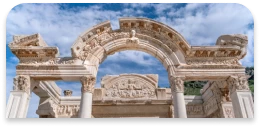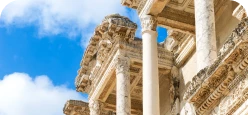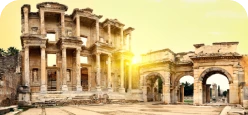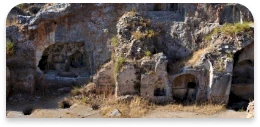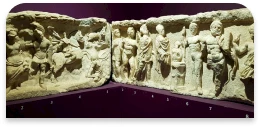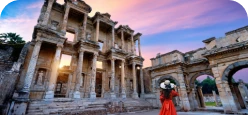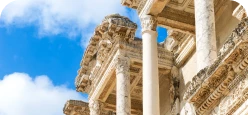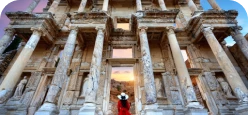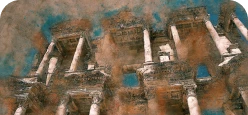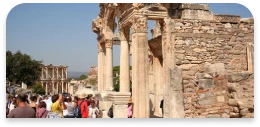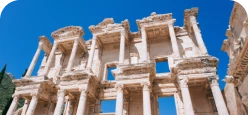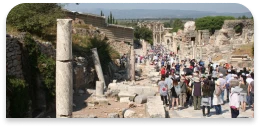Library of Celsus

Celsus Library
Ephesus, the fourth largest city of the Roman Empire has magnificent Roman structures that still preserve their glory after two thousand years. One of these spectacular buildings is the Library of Celsus which is counted as one of the biggest libraries of ancient times.
Rome transitioned from a republic to an empire in 27 BC and continuously expanded its territories from Italy to North Africa. Modern-day Greece, France, southern Germany, and Turkey were also added to the empire’s vast land.
Modern Turkey is full of well-organized Greco-Roman cities all around the country. Not only Ephesus but also some other ancient cities in modern Turkey such as Zeugma, Pergamum, Smyrna, Aphrodisias, Side, Aspendos, Pergamum, and Miletos are fine examples that reflect the splendor of the Roman Empire.
The Library of Celsus in Ephesus is not only the most striking building in the city but also one of the landmarks of Turkey, too. Taking photographs is a nightmare as everyone wants a picture in front of it. Visitors are enchanted by the fine marble work of the ornamented facade as it shines brightly under the baking Aegean Sun.
The library is located at the very heart of the city, attached to the monumental Gate of Mazeus and Mithridates that opens to Commercial Agora.
What is interesting about this building is it is not only a library but a mausoleum as well, as it consists of the tomb of Gaius Julius Celsus Polemaeanus who had been consul in 92 AD and who was the governor of the province of Asia in 115. After his death, his son, Consul Gaius Julius Aquila had the library built in his father’s honor as we read from the inscription on the building’s front staircase. The library was completed in 135 AD and Celsus’ body was put in a white marble sarcophagus which was placed in a crypt beneath the building. When you enter the main hall, you will see an apse right in front of you and beneath the apse, one can see the burial room that contains the sarcophagus.
Two storied façade is intensely ornated with 16 columns arranged in pairs. Columns at the center of the façade are shorter than the others which is an optical illusion giving the impression of greater size. A staircase with 9 steps leads to the facade of the Library. Lace-like marble work of the façade’s ceiling can be seen after climbing the staircase that takes you to the interior. The columns were richly decorated with the motifs of vegetation and mythological figures: Bellerophon riding Pegasus, a couple of Eros and Psyche darting from acanthus leaves, and the scenes of the life of Apollo and Dionysus.
Besides, four female statues placed in the façade’s niches are also remarkable. They represent abstract concepts and under the statues are Greek inscriptions giving information about their characters of them. From left to the right are Sofia (Wisdom’), Arete (‘Virtue’), Ennoia (‘Insight’), and Episteme (‘Knowledge’). They are personifications of the virtues of Celsus but also of the virtues the life of high Roman officials should have had. The library was restored with the aid of the Austrian Archaeological Institute and the originals of the statues were taken to Ephesus Museum in Vienna in 1910.
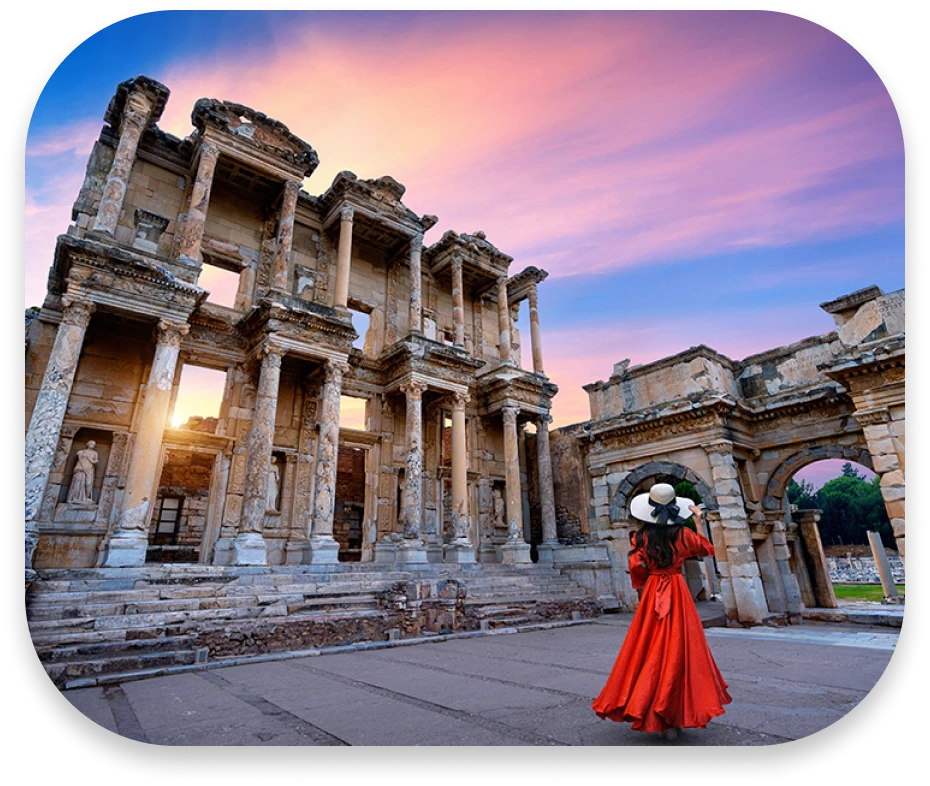
The scrolls of the manuscripts were kept in cupboards in niches on the walls. There were double walls behind the bookcases to prevent the them from the extremes of temperature and humidity. The capacity of the library was more than 12,000 scrolls. It was the third richest library in ancient times after the Alexandra and Pergamum.

